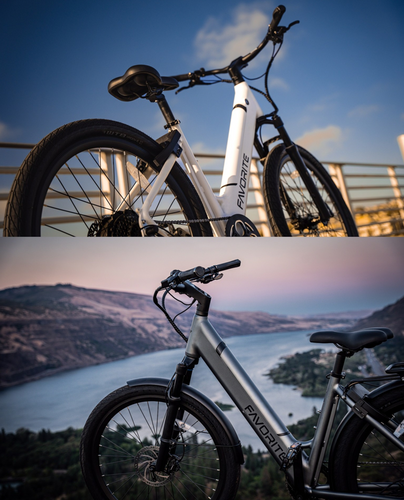
How to Choose an Electric Bike Based on Your Needs
Table of Contents
Electric bikes (e-bikes) have transformed the way we travel, offering convenience, eco-friendliness, and versatility. However, with the growing variety of models available, finding the perfect e-bike to suit your specific needs can feel overwhelming. From commuting to tackling rugged trails, each type of e-bike is designed to excel in different scenarios. This guide will help you identify the key factors to consider when choosing the right electric bike for your lifestyle.
1. Identify Your Primary Purpose
The first step in selecting an e-bike is understanding how you’ll use it. E-bikes come in various styles, each tailored to different activities:
Commuting
If your primary goal is daily travel to work or school, consider a commuter e-bike:
- Features to Look For: Lightweight frames, integrated lights, racks, and fenders for convenience and practicality.
- Range and Speed: Opt for models with a longer range (40+ miles) and moderate motor power to handle urban routes efficiently.
Off-Road Adventures
For thrill-seekers who enjoy mountain trails or gravel paths:
- Features to Look For: Sturdy frames, wider tires, and full suspension to absorb bumps and handle rough terrain.
- Power and Durability: Higher wattage motors and robust batteries to conquer steep inclines and extended rides.
Leisure and Fitness
If you’re after leisurely rides or want to improve fitness:
- Features to Look For: Hybrid or cruiser-style e-bikes with a comfortable design and adjustable pedal-assist levels.
- Versatility: Prioritize comfort and easy handling for scenic rides or light workouts.
Errands and Cargo
For running errands or carrying groceries:
- Features to Look For: Cargo e-bikes with large racks, baskets, or integrated storage solutions.
- Load Capacity: Ensure the bike can support the weight of your cargo without sacrificing stability.
2. Understand Motor Types and Placement
E-bike motors come in different types and placements, influencing performance and ride experience.
- Hub Motors: Located in the rear or front wheel, these are great for flat terrain and casual rides.
- Mid-Drive Motors: Positioned near the pedals, they offer better balance and torque, ideal for hilly areas and off-road trails.
Choose a motor based on the terrain you’ll ride and the level of power you need.
3. Evaluate Battery Range
Battery range is a critical factor, especially if you plan on longer rides or lack charging opportunities during the day.
- Short Rides: For short commutes or occasional use, a smaller battery with a range of 20–30 miles may suffice.
- Long Commutes or Adventures: Look for larger batteries with ranges of 50 miles or more.
Check the manufacturer’s specifications for battery life and consider factors like weight, terrain, and motor usage, which can affect range.
4. Prioritize Comfort and Fit
Comfort is essential for enjoyable rides, especially on longer trips.
- Frame Size: Make sure the frame matches your height and riding posture.
- Adjustable Features: Look for adjustable handlebars and seats for a customized fit.
- Suspension: Consider front or full suspension for added comfort, especially if you’ll ride on uneven surfaces.
5. Explore Key Features
Modern e-bikes come with a variety of features to enhance your experience. Depending on your needs, consider:
- Pedal Assist vs. Throttle: Pedal assist provides power as you pedal, while a throttle allows for motorized movement without pedaling.
- Smart Displays: Digital screens that show speed, battery life, and mileage.
- Lighting and Safety: Integrated lights, reflective accents, and horn or bell for safer rides.
6. Set Your Budget
E-bikes are an investment, with prices varying based on features, quality, and brand.
- Entry-Level Models: $500–$1,500, suitable for casual riders or short commutes.
- Mid-Range Models: $1,500–$3,000, ideal for regular use with more advanced features.
- High-End Models: $3,000+, offering premium components, extended range, and superior performance.
Factor in additional costs for accessories like helmets, locks, and racks when planning your budget.
7. Test Ride Before You Buy
Whenever possible, test ride your shortlisted e-bikes. A test ride allows you to:
- Assess comfort and fit.
- Evaluate performance on different terrains.
- Test features like pedal assist, throttle, and braking.
Conclusion
Choosing an electric bike that aligns with your needs is the key to maximizing its benefits. Whether you’re commuting, exploring trails, or running errands, there’s an e-bike designed for your lifestyle. By considering factors like purpose, motor type, battery range, and comfort, you can make an informed decision and enjoy every mile on your new ride.
No comments










0 comments